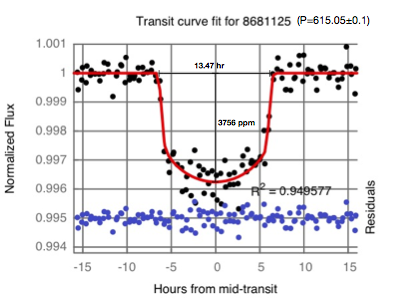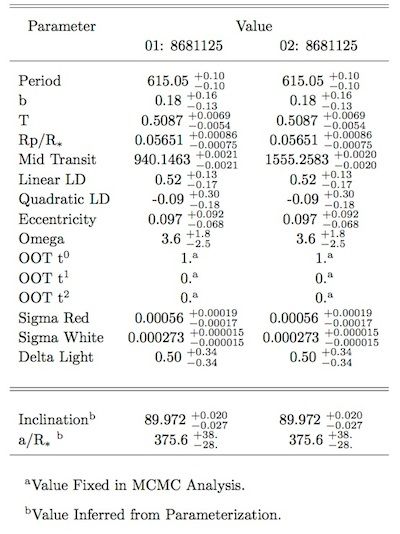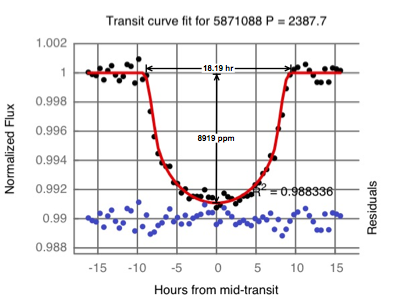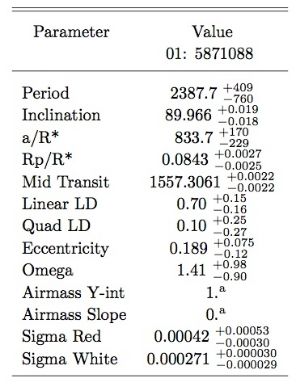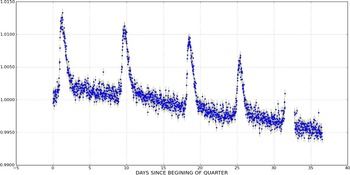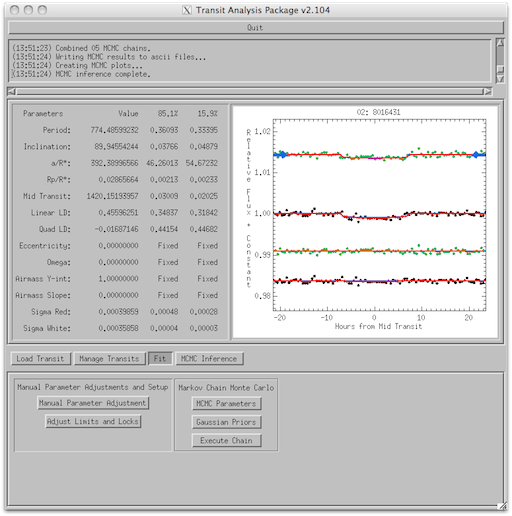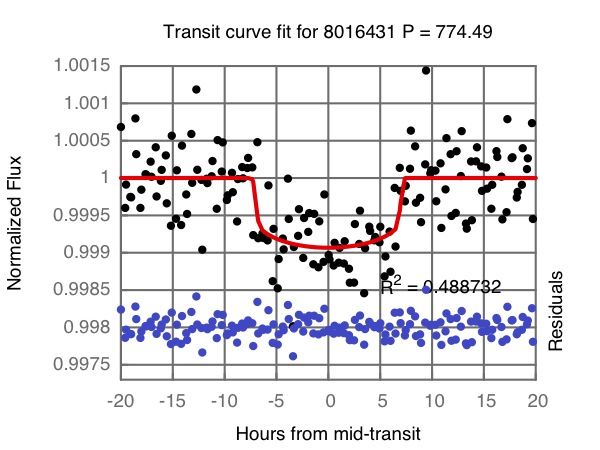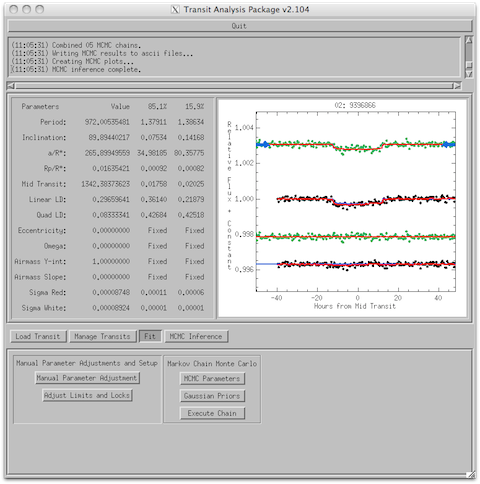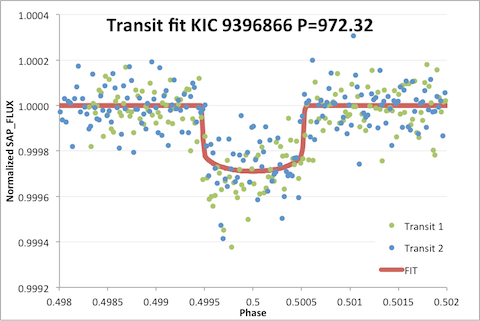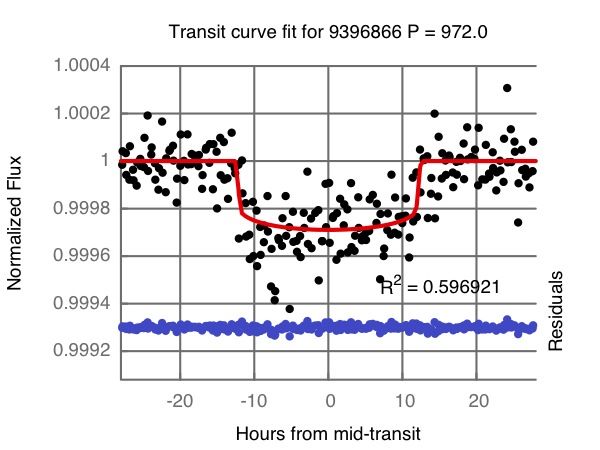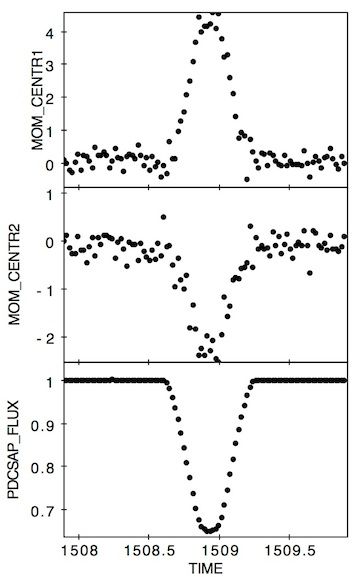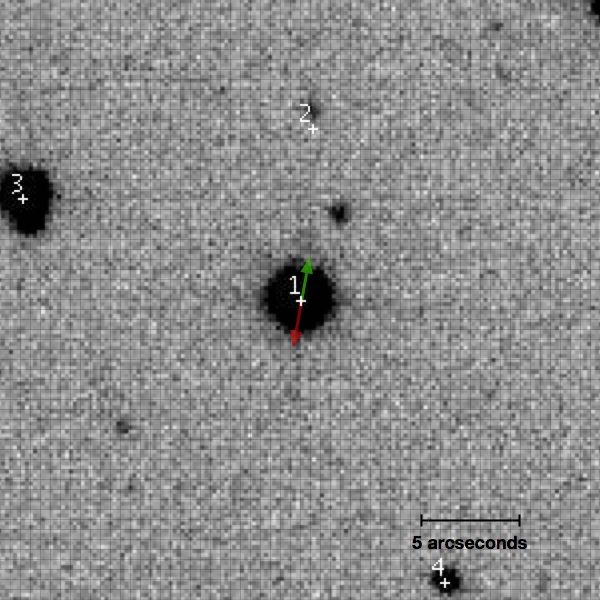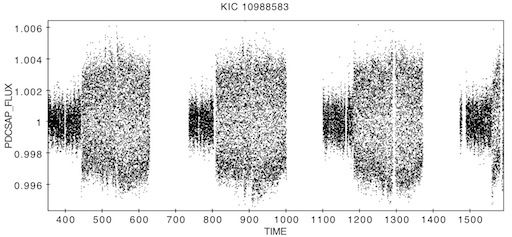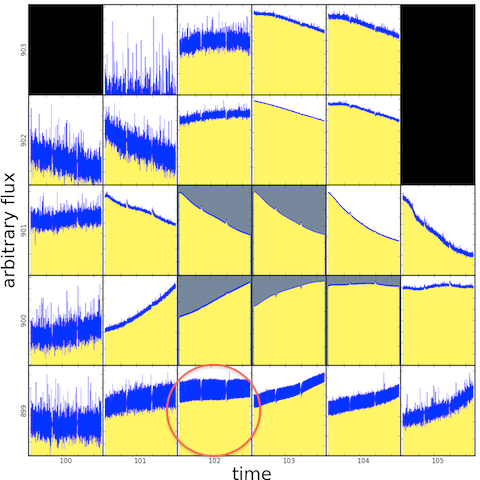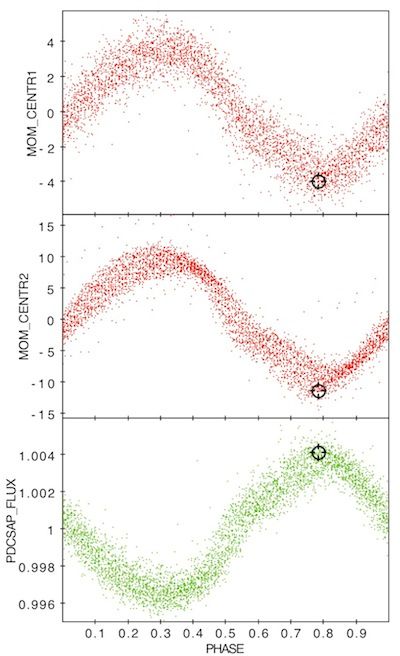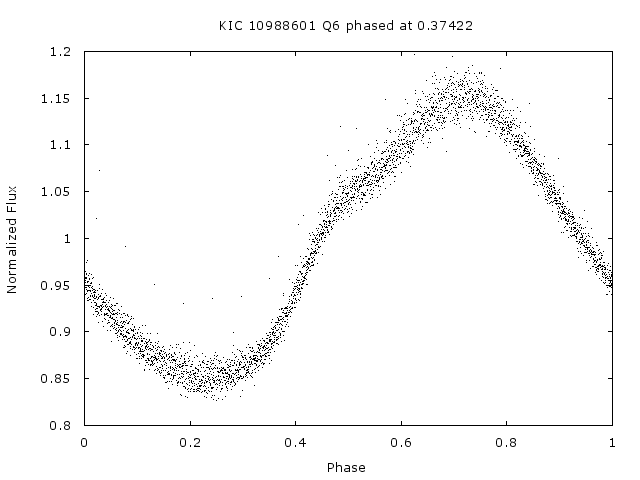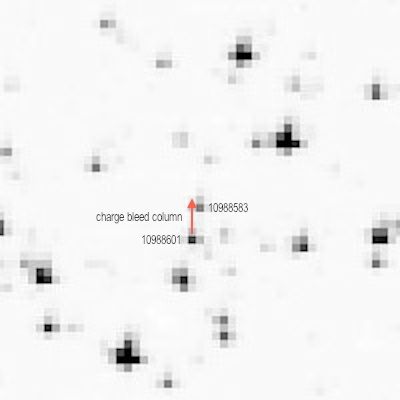Graph of Light Curve for 60019950 courtesy of Kian Jek
60019950, 354.9707, 1.98333, 14.8, cool_star
Kian Jek processed the data for this star that reveals two transits that may indicate a grazing planet transit.
Daryll LaCourse:
I took a few minutes to pull up the 60019950 field again. I've extracted light curves from the three neighbor sources at roughly 10, 7 and 4: o'clock, and I see no evidence for these transits/eclipses originating from any of those sources:
Daryll LaCourse:
If anyone wants a taste of what sort of light curves Campaign 0 may deliver, the massive TPFs for these engineering test targets arenow available. In order to extract light curves from them you will need to utilize PyKE (via Ureka bundle is probably the best method) or write your own software.
from the Kepler Blog (emphasis added):
TWO-WHEEL ENGINEERING TEST DATA ONLINEMAR 25, 20149 days of two-wheel engineering data have been delivered to the MAST archive and are accessible to all interested users within the community. This data was collected between Feb 4-13, 2014, before Campaign 0, and points to a different region of sky to Campaign 0, RA = 359 deg, Dec = -2 deg. In future publications and presentations, we would be grateful if you referred to these data collectively as the "Two-wheel Concept Engineering Test". The motivation for delivering this test data is described below.
Campaign 0 is currently underway. Data collection began on Mar 10 and is expected to end on May 30. Campaign 0 is a full end-to-end shakedown test of two-wheel operations. The data collected from Campaign 0 will be processed through the existing Kepler pipeline only as far as the production of Target Pixel Files - small, calibrated and time-tagged images for each target. Further processing of the data, potentially through light curve creation, systematic error mitigation, transit searching and transit characterization is pending operational recommendations and financial decisions from the NASA Senior Review process. Therefore, for data collected during Campaign 0 and the first few potential future campaigns, the scientific community will be far more hands-on in the process of constructing the light curves required to deliver their science goals. Some of the approaches for light curve construction from Kepler Target Pixel Files have been incorporated into the existing PyKE software suite - Simple Aperture Photometry, PSF-fitted photometry and pixel-level Principal Component Analysis. While these Kepler tools will work out of the box for Campaign 0 data, users should note well that the larger spacecraft motion during data collection on two-wheels will mean that the best photometry solutions for Kepler will not necessarily be the best solutions in any future two-wheel operation. The community are encouraged to test the current solutions critically and develop alternatives when necessary. The Kepler Science Center will be turning its attention to these problems also, pending Senior Review endorsement, but the benefits of that effort will not be felt until deeper into the proposed mission.
Therefore to help the community in the endeavor of maximizing photometric quality and precision of a two-wheel mission we have delivered engineering data to the MAST archive. The Kepler spacecraft operated with fine-guidance, collecting data from 2,017 target masks. The properties and quality of the data therein is expected to be similar to those collected during Campaign 0 and provide an excellent opportunity for scientists to make an early and impactful start upon their investigations. Note also that the chances of there being undiscovered planet transits in this engineering set are high and the potential for other serendipitous science is great. To this end we have also provided lists of long cadence and short cadence targets with a brief description of why each was observed during the test. For those investigators eager to develop this test data scientifically and those investigators with the enthusiasm to develop new technical solutions for two-wheel photometry, we encourage you to dive wholeheartedly into this data set. The anonymous ftp address for data download is archive.stsci.edu and the data is archived in folder /pub/k2/tpf_eng. Alternatively there is a URL. A typical file size for one of these target pixel files is 26 MB. The Kepler Science Center will not support this engineering data with future reprocessings, deliveries or new products. However the Kepler Science Center will support questions through the helpdesk regarding this data set on a best-effort basis.
Visit Planet Hunters Talk for more information on analyzing the K2 Engineering test data.





